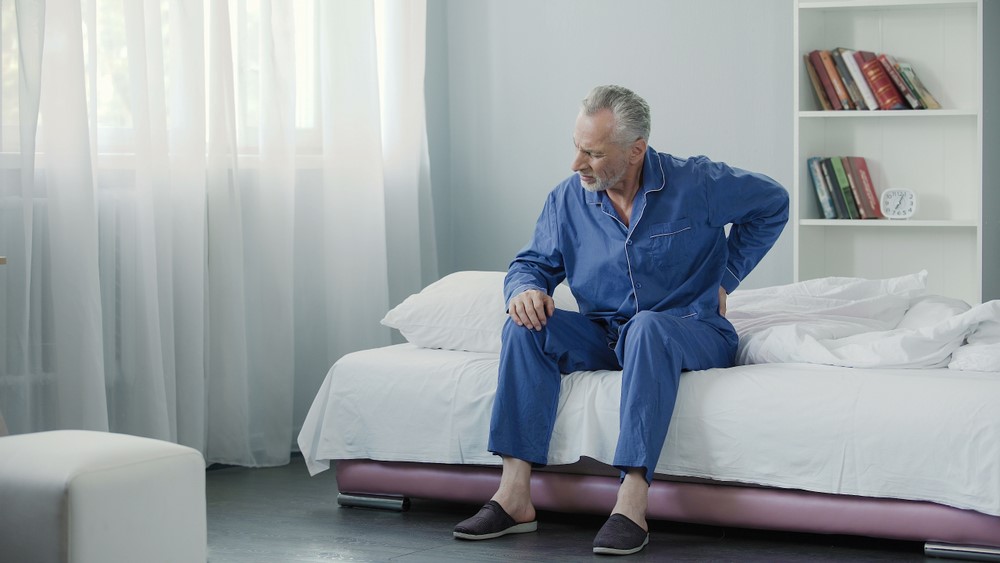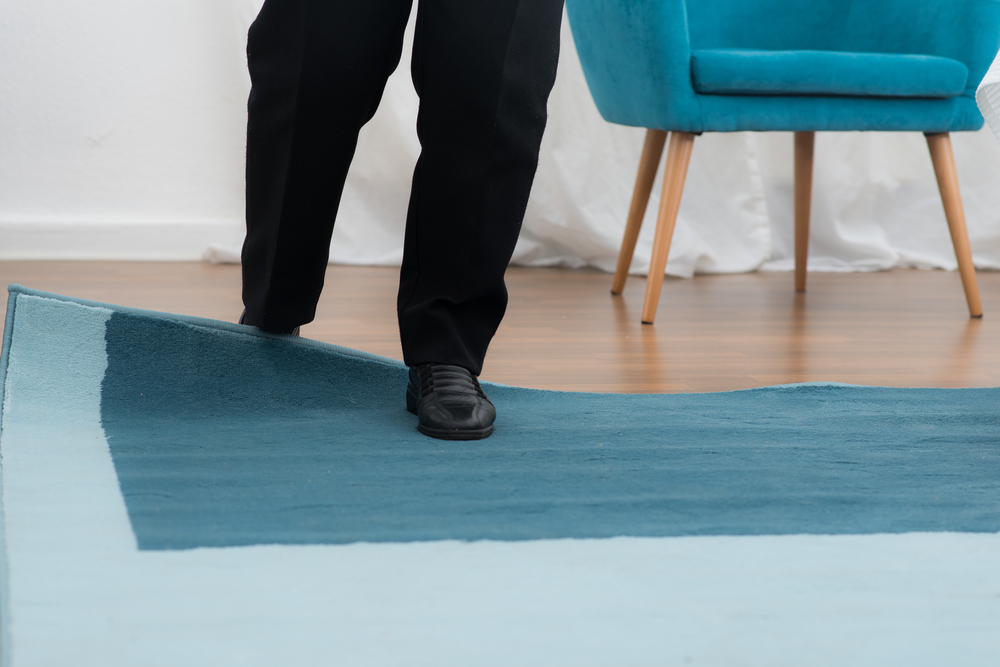
It goes without saying – safety is important. It becomes even more crucial as people age. Physical and mental declines increase the risk of accidents, even for seniors who are doing well in other areas.
Safety conversations often focus on the bathroom and the kitchen, as these are high risk environments. Bedroom safety for seniors is more easily overlooked.
But, bedrooms aren’t as safe as they seem.
Accidents can happen and they do. Some seniors struggle to get out of bed and risk falling when they do so. Others may roll out of bed during the night or get trapped in the sheets.
So, let’s look at some of the challenges seniors face in the bedroom, plus some more general ways to keep them safe.
Bedroom Challenges Seniors Face
Rolling Out Of Bed
While most of us have slept in beds throughout our lives, some seniors start rolling out of bed as they age.
There are various reasons for this, including a condition called REM behavior disorder, medication changes, a significant medical event, and changes in mobility.
Rolling out of bed can easily cause injuries, especially if there’s a hard floor underneath.
How to Prevent Rolling
Bed rails are the most common way around this.
Hospital beds sometimes have these built in, but you can also buy products and install them yourself. There are plenty of different sizes and styles, including ones that cover much of the bed and small ones that double as a standing aid.
Some are also adjustable (like this one from Amazon, our favorite!).
There are other approaches too, like using pool noodles to act as a bed bolster, like in the video below. These work best for seniors who are amenable to the idea and aren’t too large.
You can buy products for the same purpose, including rolls, bolsters, and bedside wedges. These all aim to help seniors stay in place, without making them feel trapped.
Try Decreasing the Bed Height
Some families turn to low beds as well.
This way, if the senior does roll during the night, they don’t fall as far. You could complement this with some type of padding on the floor.
However, low beds are only good for seniors who can get up and down easily. If they have problems standing, they’re likely to find it incredibly difficult to get up from a low bed.
Confusion When Getting Out Of Bed
Confusion is another issue. You might have experienced this yourself – a moment or two first thing in the morning where you don’t really know where you are.
The issue often becomes more pronounced with seniors, even those without dementia. It may take them a while to reorient.
Temporary confusion isn’t huge in itself. But, this often happens when seniors are trying to get out of bed.
This could be in the morning or, often, during the night if they urgently need to visit the bathroom. The combination of urgency and confusion dramatically increases the chances of falls.
What Helps?
Small grab bars attached to the bed can make it easier for seniors to get up slowly, giving them something to steady themselves as they do so.
You could find something else that helps them with steadying too, like a grab bar on the way. The best answer will depend on the situation and the senior’s needs.
Alternatively, you may need to help the senior into and out of bed.
Transfer aids can be powerful here, including transfer belts and transfer boards. However, it’s important to learn how to use these and be cautious, as it’s easy to injure yourself while transferring a loved one.
When Falls Can’t Be Prevented
Fall prevention isn’t always possible. So, it helps to have some other measures in place too.
The simplest option is a fall mat. These are generally padded, so that any fall isn’t as painful or dangerous. Most are also designed so they’re not a trip hazard.
The Vive Fall Mat is a great example of this style and works well on many different surfaces.
You can also find sensor products that alert caregivers about when the senior is getting up. Some use motion sensors to do so, while others turn to pressure pads in the bed instead.
Sensor products allow you to check in with the senior. So, if they have a fall, you’ll know about it immediately rather than hours later.
Dizziness Or Lack Of Muscle Control

Some seniors feel dizzy when they stand up suddenly or have limited muscle control. Such issues are often worse when the senior is still waking up.
Use Grab Bars
Having a grab bar to help the senior stand can make a big difference here.
Bars that attach to the side of the bed are particularly useful, as they’re right where the senior needs them. However, these need to be well-secured. You don’t the bar giving way right at the wrong moment.
It’s also important to be cautious when such products are installed.
Spend the time to make sure the senior knows how to use them and watch to see whether they’re actually helpful. This is crucial, as the usefulness of these tools varies from senior to senior. For some, a bar might make getting up more confusing and potentially dangerous.
Experiment with Techniques
Technique matters too. Sometimes the senior needs to simply slow down and take their time as they’re getting up. It may take some teaching and positive reinforcement to get them doing so consistently. But, once they are, the risk of falls should decrease.
Talk To Their Doctor
Difficulties in standing after sitting are sometimes related to medications or health conditions. A doctor may be able to make medication changes or propose other approaches that make things better.
Incontinence
Incontinence itself isn’t really a safety issue. It is something to talk about though, as incontinence has some safety impacts.
- First, incontinence accidents often lead to dampness. This can include damp sheets that are difficult to get out of and clothes that stick when the senior tries to move.
- Second, some people experience urge issues, such as when the need to use the bathroom comes on suddenly and they don’t have much time to respond. This can be dangerous at night in a dark room (even more so if there are trip hazards).
Seniors who struggle in this way may be attempting to get up quickly. This makes things tricky fast, especially if they also experience dizziness or confusion.
Use Incontinence Products
Incontinence products can help, as they remove the immediate issue. Many are designed to contain accidents, which means less cleanup and less stress. The risk of falls should decrease as a result.
Many times, the senior may need to wear an incontinence product (like a disposable brief) and also have a waterproof sheet on the bed. You can even have disposable pads on top of the sheet.
It takes time to find the right incontinence product (or combination of products), as the fit and function needs to be exactly right. This is frustrating and there may still be spillover. Still, getting this right can make a huge difference to the senior.
Consider a Commode
Commodes function as portable toilets that can be kept at the bedside. They’re faster and easier than trying to get to the bathroom in the middle of the night.
For men, particularly those with prostate issues, you might even just need a urine bottle. Some are specifically designed for this purpose and can even be used in bed.
Falling

Falls are serious issues for seniors. Even a minor fall can lead to considerable injuries, as seniors often have a higher risk of fractures. Injuries also heal more slowly, which can be frustrating and make seniors dependent on others during recovery.
Falls can also knock a senior’s confidence. Sometimes a single fall is enough to make the senior much more cautious and can decrease the amount they move – a pattern that can quickly lead to decreased independence and physical ability.
Thankfully, there are a few approaches that can help.
Allow Plenty of Space in the Room
Cluttered bedrooms increase the risk of falls, especially for seniors with limited mobility or vision. Because of this, it’s important to keep areas as clear as possible.
Even more space is needed if the senior uses a cane or a walker. Think about whether they have enough room to turn around and whether they’re able to access all the important parts of the room, like the bed and the bedroom.
What about getting to the bathroom at night? Plenty of space is crucial for this task, as the senior may be in a hurry.
If there isn’t much space, what can you change? Can you remove some furniture or change it for smaller pieces? Is there anything that doesn’t actually need to be in the bedroom?
Get Rid of Trip Hazards
When you’re clearing space, don’t forget to watch for trip hazards.
We don’t just mean loose cords, either. Think about what else the senior might trip over. Rugs are a common issue. It’s very easy to trip over the edge of one at night or to lose your footing when the rug bunches up.
Even rugs that seem secure may move unexpectedly.
Sometimes it’s best to get rid of rugs entirely. If they need to be there, ensure they’re secure and check them often.
Make Sure Bedspreads Don’t Reach the Floor
If bedspreads, blankets, and other items touch the floor, it’s easy for seniors to trip on them, especially when they’re getting out of bed.
Choose Footwear and Clothing Carefully
The best clothing is easy to move in and doesn’t have loose parts that may get caught. Watch out for the ankle area with pants, as it’s easy to trip over the bottom of long pants.
Non-slip socks or slippers with tread can be helpful too. These provide extra grip and reduce the risk of tripping. Just make sure they are stored well, otherwise they become a trip hazard too.
Keep the Space Well Lit
If the room is well lit, it’s easy for seniors to see where the hazards are and to avoid them. This is especially helpful if their memory is poor or if their eyesight is fading.
This could include having night lights or motion sensitive lights in the room at night, in case seniors need to use the bathroom. Stumbling around in the dark quickly leads to accidents.
You could also use a touch sensitive bedside lamp. This way the senior can quickly turn the light on without fumbling for a switch.
General Ways to Improve Bedroom Safety for Seniors

There are some other important ways to make the bedroom safer for seniors. Some of these even dramatically reduce the risk of accidents.
Keep Mobility Aids Near
If the senior needs a cane or a walker, then create a spot near the bed where it can be stored. This way it can easily be reached as soon as the senior gets up.
But, while the tool needs to be close, it should also be out of the way (otherwise it just becomes a trip hazard).
Think About the Height of the Bed
If the bed is too low, the senior may struggle to get in or out of it, particularly if they find standing up difficult. Thankfully, you don’t need to buy a whole new bed. Sturdy furniture risers will do the trick nicely. Many are even designed to be used for beds.
Of course, falling from a tall bed is more dangerous. So, if the senior is a high fall risk, you might look for a lower bed instead.
Reduce Their Need to Get Up
If the senior needs plenty of bed rest, then anything that reduces their need to get up could improve their safety.
For example, you may have a bed caddy with their favorite items and connect light the light switch to a remote that’s easy to reach. Overbed tables can be helpful too, especially those that are easily moved out of the way.
Make Sure They Can Call for Support
Finally, make sure the senior can call for help if there’s an emergency.
Cellphones are the go-to approach, but it’s good to include a corded landline as well, as this should function even without power (while a dead cellphone is a useless brick).
Phone access is particularly important if the senior lives on their own. Voice command phones for the elderly are an excellent way to make it as easy as possible for seniors to make a phone call when they have physical limitations.
Emergency alert buttons are powerful too. These allow the senior to signal for help without any effort, no matter where they are. The senior could even sleep wearing the device or with it next to them.
Feeling Overwhelmed?
Check out our Caregiving Consulting service for personalized support and guidance.

Leave a Reply